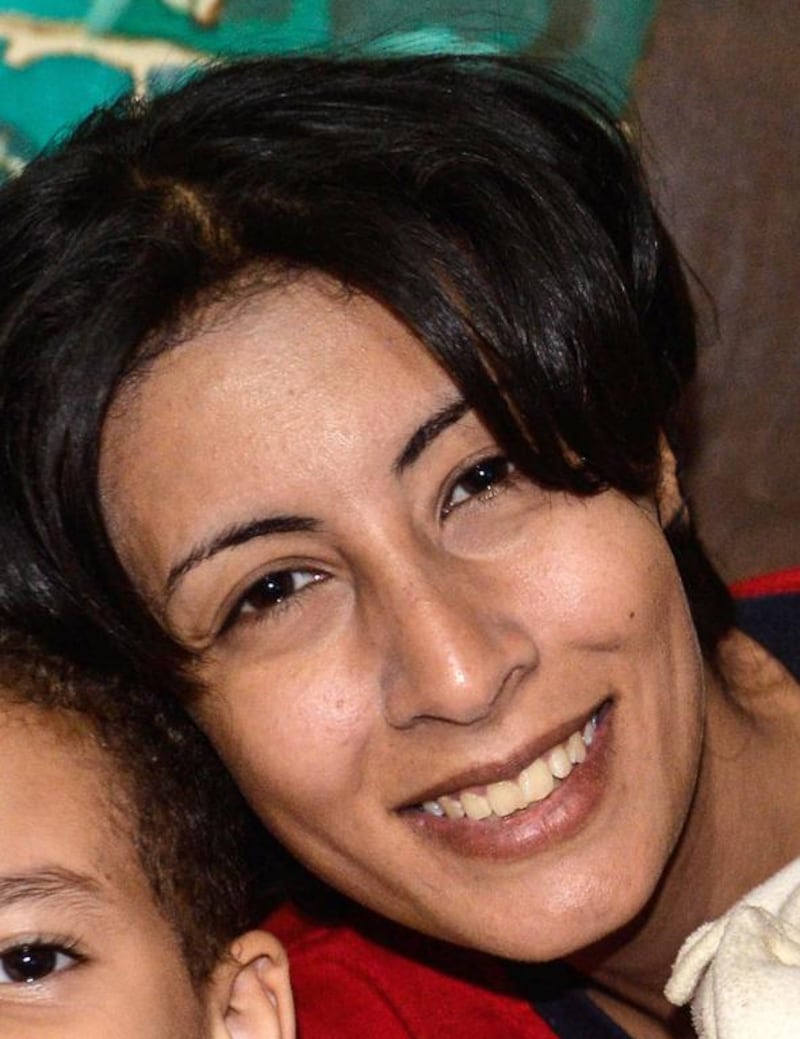CAIRO // The shooting death of protester Shaimaa El Sabbagh has quickly become a new milestone for the tensions present in Egyptian society following the 2011 uprising that toppled Hosni Mubarak’s regime.
It has also deepened the faultlines between liberal pro-democracy activists and supporters of the outlawed Muslim Brotherhood.
Yet, what made El Sabbagh’s death such a turning point was the way she was killed, that her death was heavily documented, what she was doing at the time, and that the country’s top prosecutor has ordered an investigation.
The 32-year-old mother of a young boy was shot dead in Cairo on January 24, the eve of the fourth anniversary of the 2011 uprising.
Originally from Alexandria, El Sabbagh was demonstrating peacefully with about 40 people in downtown Cairo, carrying wreaths to lay at Tahrir Square, birthplace of the uprising, in memory of the estimated 900 protesters killed during the 18-day revolt. The small group of demonstrators chanted, “bread, freedom and social justice”, the main slogan of the uprising.
Her fellow members of the leftist Popular Alliance party who took part in the demonstration, as well as other witnesses, said police fired tear gas and birdshot within minutes of the protesters’ arrival.
Earlier, a top party official who went over to the officer in charge to inform him of the protester’s plans was arrested.
A video clip of the incident shows two masked policemen pointing their rifles in El Sabbagh’s direction as shots ring out and a military-style “edrab” – “fire” – command is heard.
A photo shows her being held up as she looks into the distance with blood running down her face and neck, while another video clip shows a man carrying El Sabbagh’s near-lifeless body, her face, hair and shoulders bloodied.
Witnesses said police refused to let fellow demonstrators and passers-by, including a doctor, help El Sabbagh, arresting several of them and chasing others away. Nor did they allow an ambulance through their lines to take her to hospital.
An initial post mortem report said El Sabbagh was hit by birdshot in the neck and back, and in the heart and lungs.
Egyptian authorities quickly opened a high-level investigation into her death, a rare occurance in a country where people frequently die in demonstrations.
Interior minister Mohammed Ibrahim, in charge of the highly militarised police, said he would personally hand over the culprit for trial if he turned out to be a member of the force.
A senior interior ministry official, however, claimed the images, widely distributed on social media networks, were of no consequence and hinted that they could have been fabricated by the outlawed Muslim Brotherhood.
El Sabbagh’s death has touched a nerve in Egypt at a time when the country continues to be roiled by turmoil unleashed by the removal of Mubarak and that of his successor, Mohammed Morsi of the Muslim Brotherhood, in 2013.
Besides an insurgency in the Sinai Peninsula, where at least 30 soldiers and policemen were killed in coordinated attacks by militants on Thursday, president Abdel Fattah El Sisi has the unenviable task of dealing with an ailing economy, a disruptive protest campaign by Mr Morsi supporters and security threats from Libyan militants on the nation’s western border.
The graphic images of El Sabbagh’s death have sparked outrage by activists on social media networks and led two high-profile, pro-government journalists to publically blame the police for her death.
In a rare direct criticism of Mr El Sisi, one of the two, chairman of the state-owned Al Ahram newspaper, Ahmed El Sayed El Nagar, also wrote that the president had a responsibility to ensure that justice is served in her case.
Brotherhood members, on the other hand, have been livid that so much was made over El Sabbagh’s death when the frequent killing by police of their protesters hardly causes a stir.
A day before El Sabbagh’s death, a young female Brotherhood protester was shot dead during a demonstration in Alexandria. The only image of the young woman, Sondos Reda, was her dead body with her face covered in blood. And the day after El Sabbagh’s death, the uprising’s anniversary, at least 23 people were killed in violent street protests, including three policemen and three militants who died when explosive devices they were planting went off prematurely.
Mr El Sisi supporters have also objected to the uproar over El Sabbagh’s death, faulting the activists who mourned her for not according similar treatment to the hundreds of soldiers and policemen killed by militants over the past 18 months.
During a demonstration on Thursday by about 100 women protesting El Sabbagh’s death at the same spot where she fell, a group of similar size heckled them with slogans in support of Mr El Sisi and solidarity between the people, the army and the police.
The protest ended peacefully and the women claimed a victory because they had successfully staged a demonstration without prior authorisation from the police, a must under a widely disputed law on demonstrations adopted in late 2013.
foreign.desk@thenational.ae





